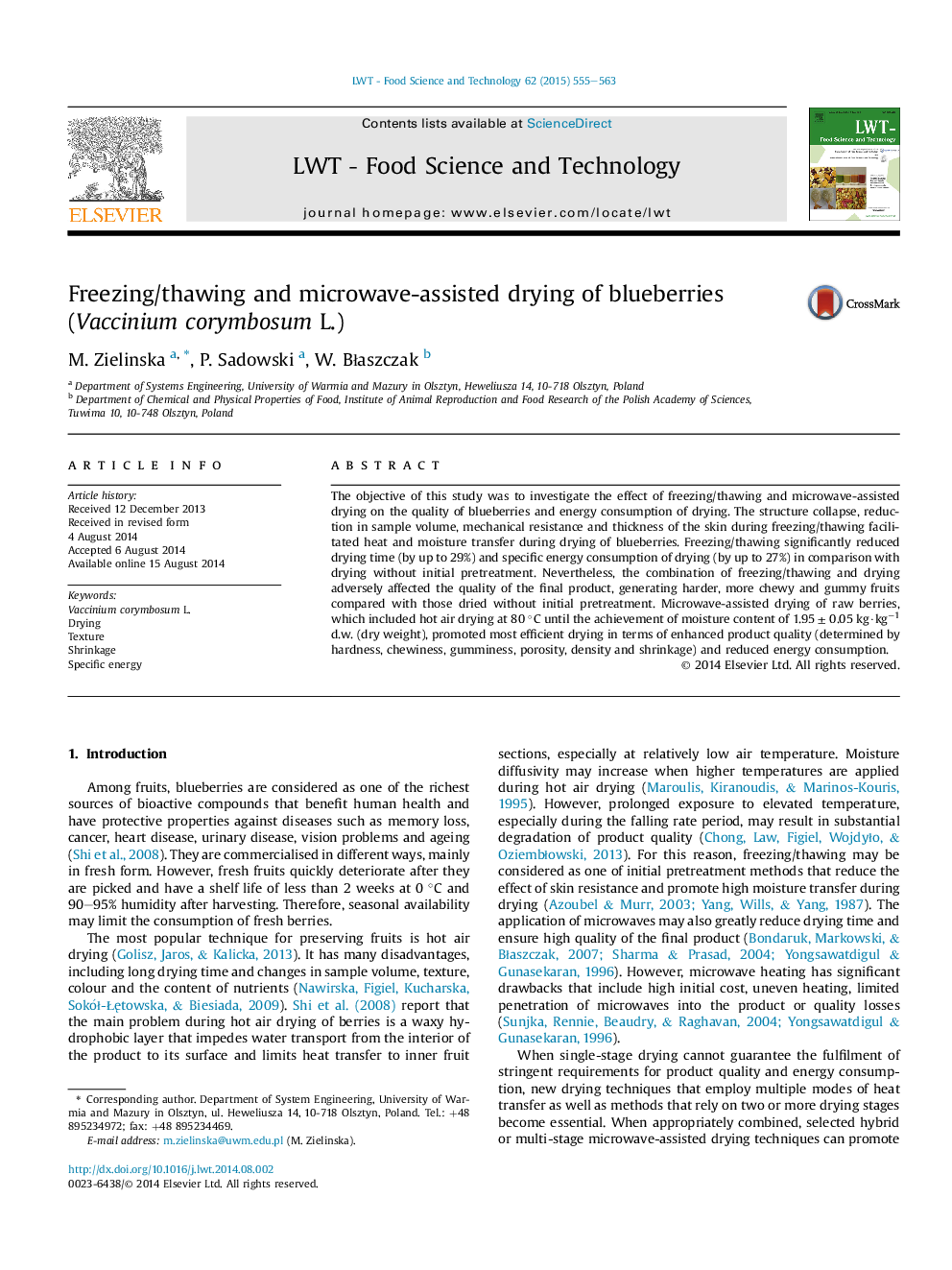| Article ID | Journal | Published Year | Pages | File Type |
|---|---|---|---|---|
| 6402240 | LWT - Food Science and Technology | 2015 | 9 Pages |
â¢Initial freezing/thawing facilitates moisture transfer during drying of blueberries.â¢Initial freezing/thawing adversely affects the quality of dried blueberries.â¢Microwave-assisted drying maintains high texture quality of dried blueberries.â¢Appropriately combined multi-stage drying promotes efficient drying of blueberries.
The objective of this study was to investigate the effect of freezing/thawing and microwave-assisted drying on the quality of blueberries and energy consumption of drying. The structure collapse, reduction in sample volume, mechanical resistance and thickness of the skin during freezing/thawing facilitated heat and moisture transfer during drying of blueberries. Freezing/thawing significantly reduced drying time (by up to 29%) and specific energy consumption of drying (by up to 27%) in comparison with drying without initial pretreatment. Nevertheless, the combination of freezing/thawing and drying adversely affected the quality of the final product, generating harder, more chewy and gummy fruits compared with those dried without initial pretreatment. Microwave-assisted drying of raw berries, which included hot air drying at 80 °C until the achievement of moisture content of 1.95 ± 0.05 kg·kgâ1 d.w. (dry weight), promoted most efficient drying in terms of enhanced product quality (determined by hardness, chewiness, gumminess, porosity, density and shrinkage) and reduced energy consumption.
